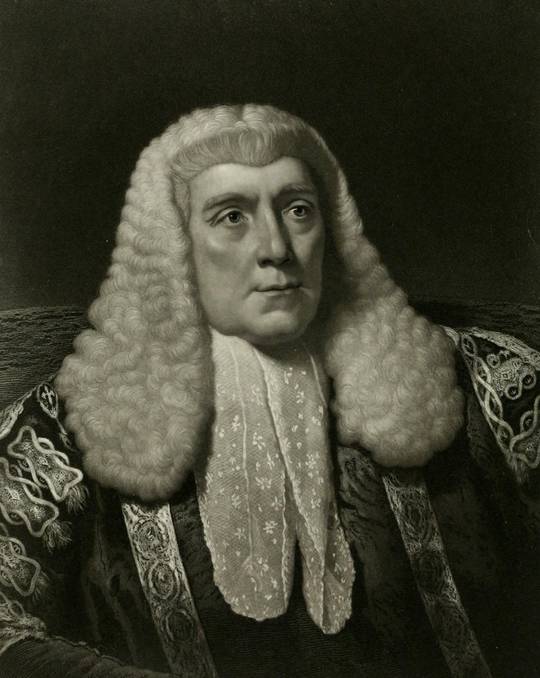John Singleton Copley (1772-1863) First Baron Lyndhurst from 1827. Solicitor General, 1819-24. Attorney General, 1824-26. Master of the Rolls, 1826-27. Lord Chancellor 1827-30, 1834-35, 1841-46. Born in Boston, son of the American painter John Singleton Copley (1738-1815), who emigrated to England in 1774 after being harassed by a Rebel mob and was later swindled out of the value of his Beacon Hill estate by speculators who knew of the plans to build the Massachusetts State House on it. (Copley junior went to Boston in 1796 trying to get proper compensation, but fruitlessly.)
Copley was educated at Trinity College, Cambridge, where he was a Fellow, 1795-1804, before being called to the Bar at Lincoln’s Inn. He practised on the Midlands circuit and built up a substantial practice, though his wealth was badly affected by paying off his father’s debts after the painter’s death in 1815. Although he had previously been a Radical and a republican, known as ‘Jacobin Copley’, Liverpool brought him into Parliament on a vacancy in 1818, after which he rose through the government’s law offices, being an excellent speaker and presenting the government’s case in the Bill of Pains and Penalties against Queen Caroline in 1820. After winning that case in the Lords, he told John Campbell: ‘What chiefly delights me is that we remain in, not from being liked, but because you Whigs are hated – just as one has more pleasure in succeeding by a piece of roguery than upon the merits.’1
Copley, an opponent of Catholic Emancipation, stood for Cambridge University in 1826 against Palmerston, Goulburn and Bankes and came top of the poll, 130 votes ahead of Palmerston. After the election he was offered the Mastership of the Rolls and accepted it, on the understanding that he would succeed Eldon as Lord Chancellor in due course. When Liverpool retired, he became Lord Chancellor under Canning and kept the office under Goderich and Wellington, over Eldon’s objections. He supported Catholic Emancipation in 1829 and by November 1830 was so well established that Grey attempted to keep him as Lord Chancellor (thwarted by his colleagues). Married to two successive wives decades younger than him, Copley was an early patron of Disraeli, with whom he shared the favours of Henrietta Sykes. He lived to 91 and died with an estate of over £200,000.
Mrs Arbuthnot said of Copley, in a moment of annoyance, ‘He is a shabby fellow and always follows le plus fort, but consequently is a good political barometer.’ Nevertheless, she recognised him as a ‘sharp, clever man’ and ‘a pleasant, good-natured man’.2
[1] Campbell, Lives of the Lord Chancellors, quoted in Fisher, The History of Parliament the House of Commons 1820-1832.
[2] Bamford and Wellington, The Journal of Mrs. Arbuthnot, 1820-32, Vol. 2, pp. 127, 135 and 206.
